Want to achieve a more intimate shot of your subject or looking for ways to really emphasise them in the frame? If so, grab yourself a beanbag and try some low level shooting for a different perspective on things…
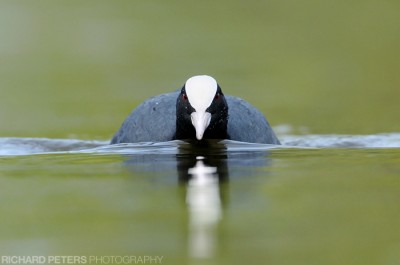
Coot, D300, 600mm, 1/400, f8, ISO 500
Why get down so low?
As with all aspects of photography, there are times when certain techniques work and other’s where they don’t. Low level shooting is one way of getting round your subject being in the middle of unflattering or dull surroundings. Getting on the ground will allow you to shoot your subject with a completely out of focus foreground and background, making your subject really jump out of the picture. Similarly it also works well for birds on water too and can produce a far more appealing image of your subject than one taken from higher up and looking down at them. The Jackdaw above was standing on your run of the mill grass in a park…however by getting down low I was able to produce a far more interesting image than I would have from shooting higher up. It does highlight one aspect of low level shooting though…sometimes your so low the grass is tall enough to hide your subjects feet. As a general rule this is of course a no no, however in this instance it doesn’t detract from the shot – had both legs been down then it would have been a different story but the pose, composition and colouring make for a fun image regardless (all very subjective of course).
How low should you go?
Generally speaking, tripod’s don’t go low enough for this sort of thing. I favour a beanbag as they allow you to get as low to the floor as possible whilst still letting you see through the viewfinder. If you need to be even lower, and your lens is fairly flat from one end to the other, just use the floor itself to support the camera. However, I’d recommend investing in a right angle viewfinder for your camera if your using the floor. With the 600mm you can’t rest the camera on the floor as the size of the front element would mean the camera sits pointing upwards slightly. My beanbag has two liners inside and when doing low level work I remove one of them. This gives me the perfect height so the camera can sit completely level with the front element just barely off the floor. In the photo below you can see I’m right on the edge of the grass so that I can tilt the camera down a little if needed…this is because the bank was slightly raised meaning I couldn’t get totally flat to my subjects.
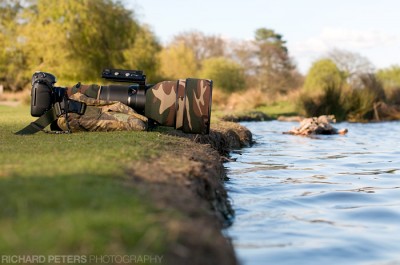
Getting down flat with a beanbag
My beanbag of choice is the C14.3 double beanbag with shoulder strap, from Wildlife Watching Supplies. The perfect size for big glass and has a removable shoulder strap to make it easier to carry out in the field.
Making the most of colour
If you’re shooting birds on the water, one thing to keep an eye out for is colour casts in the water that are caused by the reflections of nearby surroundings. You can achieve nice variations in your shots by moving yourself around and getting clear blue sky, green tree’s, brown tree’s (in autumn) etc reflecting in the water. Below is the same bird, a Red Crested Pochard, with variations of water colour to show the effect it can have.
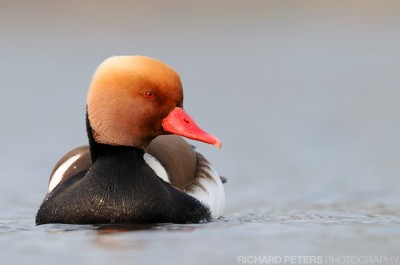
Moslty overcast sky
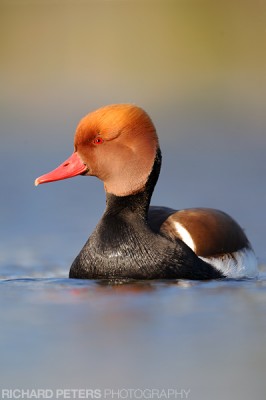
Blue sky with far side of pond
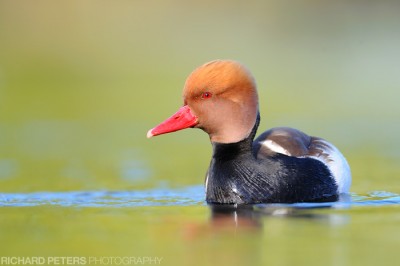
Tree’s
If your shooting subjects on the ground and away from water then being so low will mean your background colour is that of the distant horizon. Again it could be a line of tree’s, a fence, a wall…anything! So long as it’s far enough away to be completely out of focus it doesn’t matter what it is.
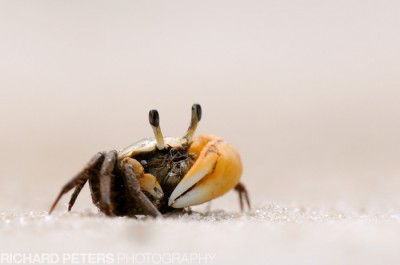
Fiddler Crab, D300 with 200-400 + 1.4x
Getting dirty
Of course one thing to keep in mind when doing this type of thing is your laying on the ground, so depending on the weather, time of year or where your shooting you could end up with all sorts of muck on you (if your shooting in parks with dog walkers, you know exactly what to look out for..!!) so make sure your wearing the right clothing. Also, keep an eye out for stinging nettles! I made the mistake of wearing a t-shirt and laying one arm right across some in a rush to get a shot…oops!
It’s not just for intimate portraits
Far from it! All kinds of behaviour can work well from a low level. One of my favourites is seeing coots fight as the low POV really lets you appreciate the battles all the more with water flying everywhere.
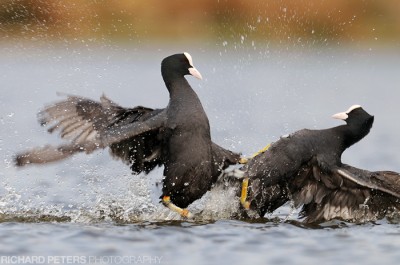
Fighting Coots
Just for fun I thought I’d throw in a mallard bobbing on the water. A scene we witness a thousand times but given a slight twist here from the angle it’s shot from.
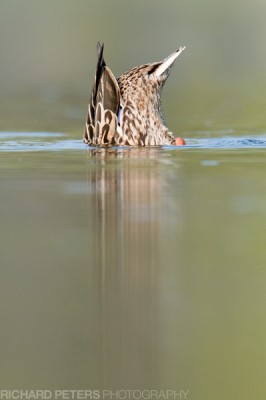
Bobing Duck
So what are you waiting for?
Get yourself a beanbag and get out there to see what you can come up with!
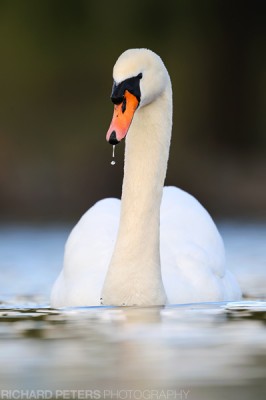
Swan, D3, 600 + 1.4x, 1/500, f7.1, ISO 400
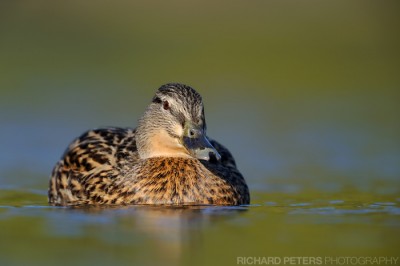
Female Mallard, D3, 600 + 1.4x, 1/640, f6.5, ISO 200








